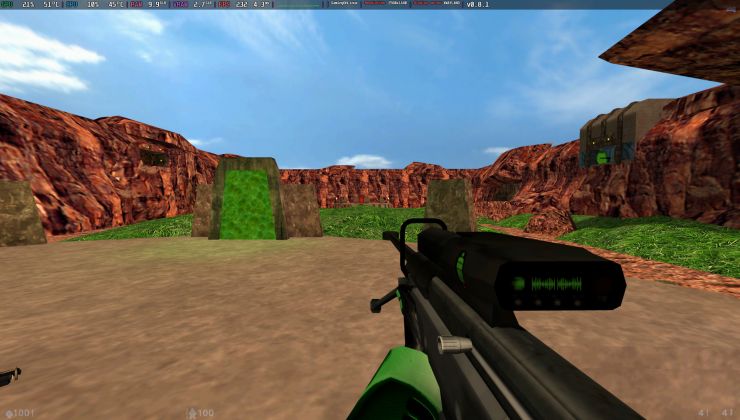Okay, hear me out. You want to keep an eye on your system for things like RAM use, disk space, processor load and more…but you want something a tiny bit flashy that's still simple enough to run in a terminal window? You need to try out bpytop.
It's a fully featured resource monitor with a "game inspired menu system" and it's genuinely great, I've fallen just a little bit in love with it having it open on my second monitor to keep me informed of how my system is doing. Just look at how gosh-darn awesome it looks:
Thanks to the process selection feature, you can also use it to send "SIGTERM, SIGKILL, SIGINT" to individual processes if you need to get rid of them or if they're stuck. I can see this being incredibly useful. It does practically everything you need and it looks good while doing so.
bpytop is actually a port to Python of another project named bashtop, with the creator suggesting people move on over to bpytop due to it being faster, less resource hungry, mouse support, graphs for memory consumption and more new advanced features.
Their "game inspired" menu is a nice bit of fluff too, giving you a quick and easy way to adjust various settings - very much like you actually would find in a game.
The developer appears to have plans to expand it too with GPU support for temperatures and load, options for resizing all boxes, CPU and mem stats for docker containers (if possible) and the usual optimizations.
As a bit of icing on the cake, you can theme it too.
Check bpytop out on GitHub.
Don't try this in rxvt.
It looks horrible.
One of the reasons I've switched recently to Kitty term...
Oh, I meant mostly that I figured it'd pop up in EPEL8, but anyone working with a huge amount of stuff is not going to be on 8 yet. Slow moving this boat is... I mean some companies are convinced that their stuff will break if they move off of Cent5, so there is that. Fortunately I don't work for one of those companies. But upgrading around does take it's sweet time.Now to wait 10 years for bpytop to be packaged for enterprise Linux so I can use it. :)
Looks like it's already in the EPEL8 repo? And plenty of others, depending on how you define "packaged for enterprise".
Of note, RHEL8 is actually not terrible as a desktop! Though I haven't tried Steam or anything on it yet (I got a license to use their KB, so figured I may as well install it on my laptop to have a play.)
Now it just needs to be rewritten in rust.Behold, [ytop](https://github.com/cjbassi/ytop).
I was actually showing off ytop (and [a bunch of other useful utilities written in Rust](https://zaiste.net/posts/shell-commands-rust/) ) to some of my PhD student colleagues in the natural sciences this week, and one of them suggested that the best use for this kind of utility is to have it running on your screen in the background when a journalist is interviewing you for a science story so the general public knows you're doing work.
Last edited by Philadelphus on 17 Oct 2020 at 9:16 am UTC
Now to wait 10 years for bpytop to be packaged for enterprise Linux so I can use it. :)
Looks like it's already in the EPEL8 repo? And plenty of others, depending on how you define "packaged for enterprise".
I can confirm its already EPEL8 and being updated regularly. I've been using it for a while on CentOS 8 / oVirt.
- Gilboa
Last edited by gilboa on 18 Oct 2020 at 12:34 pm UTC










 How to install Battle.net on Linux, SteamOS and Steam Deck for World of Warcraft and Starcraft
How to install Battle.net on Linux, SteamOS and Steam Deck for World of Warcraft and Starcraft How to play games from GOG and Epic Games on Linux, SteamOS and Steam Deck
How to play games from GOG and Epic Games on Linux, SteamOS and Steam Deck